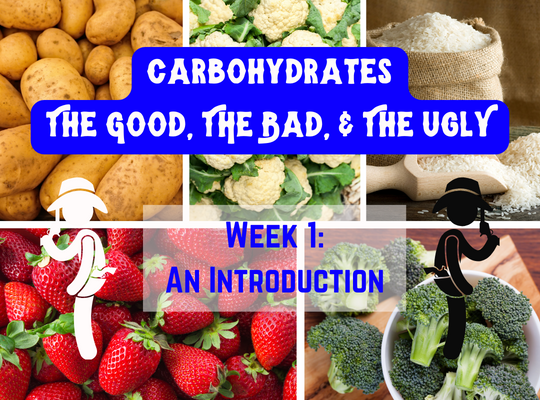When people think of keto, they automatically think of zero carbohydrates (or carbs). But that’s not actually the case. Carbs in food actually play an important part of keto. They’re just certain kinds of carbs and they fall below 20-50 grams per day in total. So, what are these keto-friendly carbs? I’m glad you asked!
What are Carbs?
Medline Plus defines carbs as sugar molecules. They are one of three macronutrients in our food. Our body breaks down carbs into glucose. Glucose, or blood sugar, is the main energy source most people’s bodies use for their cells, tissues, and organs. Our bodies can use glucose immediately or store it and use it later.
The Three Types of Carbs in Food
The first type of carbs in food are sugars, or simple carbs. These are sugars added to food, like you get in candy, baked goods, and processed foods. They also include natural sugars that are in fruit, vegetables, and dairy. Next week, we will do a blog on simple carbs and get into more detail.
The second type of carbs in food are starches. These are also called complex carbs, and we tend to stay away from these on keto simply due to the amount of carbs in them. They include some vegetables, bread, cereals, and pasta. In the third week of this series, we’ll examine these in more detail.
The third type of carbs in food is fiber. Fiber is a type of complex carb, but we eat fiber on keto. Your body can’t break down fiber, so it helps us in a couple of ways. Firstly, it doesn’t break down into glucose so it doesn’t raise your blood sugar levels. Secondly, it helps you feel full and stay feeling full for a longer period of time. And thirdly, it helps push your food through your body so it helps with digestion. Fiber is a very helpful carb, and that’s why we don’t tend to count it on keto.
How Do you Know How Many Carbs are in Food?
The easiest way to find out how many carbs are in food is to read the label. Learning to read food labels is an important part of doing keto. On every packaged food, there is a label that identifies the food composition as well as what ingredients are in it. Each label outlines the macros that are in it – fat, carbs, and proteins. That’s the information we are really interested in with keto.

At the very top is the serving size. This is important, because the numbers can be misleading if you don’t pay attention. Is the serving for a full cup, ½ cup, ¼ cup, or less? You might normally eat a cup of cereal, but the numbers are for a ¼ cup of it. Calories are also listed on the top of the label.
Next on the list is the amount of fat, carbs, and protein in the food. It also lists cholesterol and sodium on the label. Down at the bottom are some of the minerals and vitamins it contains. Over to the right is the percentage the food will give you of each listed item, based on a diet recommended by nutritionists (so not keto).
The Macros of Keto
With keto, we focus on the fat, carbs, and protein listed on the food label. We want our total fat for the day to add up to 70-75% of the calories we take in. Protein should equal 15-20% of the calories we take in. And carbs should be about 5-10% and not be more than about 20 grams of carbs in total. So, look at the label and see how many carbs are in a food. If your daily total is going to add up to more than 20 grams, put it back.
Now fresh food, like fruit and vegetables, don’t come with a label. That’s when we need to rely on technology to keep track. If you Google the nutritional information of something, it will usually show you a made up food label for that food. You can also use My Fitness Pal, Carb Manager, or other nutritional app for the information.
What are Net Carbs in Food?
Net carbs are the total number in a food minus the fiber count. So, if you have 100 grams of strawberries, for example, the total number of carbs is 8 grams. However, fiber (listed under the total carbohydrates) are 2 grams. You subtract those 2 grams of fiber from the total number of carbs, and you have the net carbs in strawberries, which would be 4 grams.
This is why some fruit and vegetables are okay to have on keto – it’s usually all about the amount of fiber. Berries are not as high in natural sugars, and they have fiber to bring the numbers down even more. Vegetables such as broccoli have higher fiber numbers, so that too brings the carbs down to a manageable level. Fiber is our friend on keto!
Wendy




